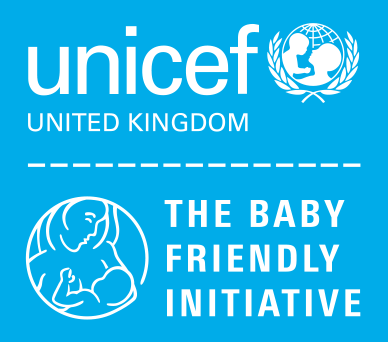
The Lancet: Increasing breastfeeding worldwide could prevent over 800,000 child deaths every year
Failing to breastfeed costs the global economy around US$302 billion every year
Just 1 in 5 children in high-income countries are breastfed to 12 months, whilst only 1 in 3 children in low- and middle-income countries are exclusively breastfed for the first six months. As a result, millions of children are failing to receive the full benefits provided by breastfeeding. The findings come from the largest and most detailed analysis to quantify levels, trends, and benefits of breastfeeding around the world, published in The Lancet.
New estimates produced for the two-part series reveal that increasing breastfeeding to near-universal levels for infants and young children could save over 800,000 children’s lives a year worldwide (equivalent to 13% of all deaths in children under two) and prevent an extra 20,000 deaths from breast cancer every year.
Although breastfeeding is one of the most effective preventive health measures for children and mothers regardless of where they live, it has been overlooked as a critical need for the health of the population, say the authors.
“There is a widespread misconception that the benefits of breastfeeding only relate to poor countries. Nothing could be further from the truth,” says Series author Professor Cesar Victora from the Federal University of Pelotas in Brazil. “Our work for this Series clearly shows that breastfeeding saves lives and money in all countries, rich and poor alike. Therefore, the importance of tackling the issue globally is greater than ever.” [1]
Analysis of data from 28 systematic reviews and meta-analyses, of which 22 were commissioned specifically for the series, indicates that breastfeeding not only has multiple health benefits for children and mothers, but it also has dramatic effects on life expectancy (Paper 1, table). For example, in high-income countries, breastfeeding reduces the risk of sudden infant deaths by more than a third, while in low-and middle-income countries about half of all diarrhoea episodes and a third of respiratory infections could be avoided by breastfeeding. Breastfeeding also increases intelligence, and protects against obesity and diabetes in later life. For mothers, longer-duration breastfeeding reduces the risks of breast cancer and ovarian cancer.
There is also a strong economic case for investment in promoting breastfeeding. Modelling conducted for the series estimates that global economic losses of lower cognition from not breastfeeding reached a staggering US$302 billion in 2012, equivalent to 0.49% of world gross national income. In high-income countries alone these losses amounted to US$231.4 billion, equivalent to 0.53% of gross national income (Paper 2, table 2).
Furthermore, the authors calculate that boosting breastfeeding rates for infants below six months of age to 90% in the USA, China, and Brazil and to 45% in the UK would cut treatment costs of common childhood illnesses (eg, pneumonia, diarrhoea, and asthma) and save healthcare systems at least US$2.45 billion in the USA, US$29.5 million in the UK, US$223.6 million in China, and US$6.0 million in Brazil.
Yet, worldwide rates of breastfeeding are low, particularly in high-income countries. For example, the UK (<1%), Ireland (2%), and Denmark (3%) have some of the lowest rates of breastfeeding at 12 months in the world (Paper 1, figure 1 and web appendix table 4.2 page 16-17).
“Breastfeeding is one of the few positive health behaviours that is more common in poor than richer countries, and within poor countries, is more frequent among poor mothers,” explains Professor Victora. “The stark reality is that in the absence of breastfeeding, the rich-poor gap in child survival would be even wider. Our findings should reassure policymakers that a rapid return on investment is realistic and feasible, and won’t need a generation to be realised.” [1]
The International Code of Marketing of Breastmilk Substitutes (the Code) was adopted at the 34th World Health Assembly in 1981 to protect the public from inappropriate marketing strategies, but has been weakly implemented and monitored by countries [2]. As a result, aggressive marketing of breastmilk substitutes is undermining efforts to improve breastfeeding rates, with global sales expected to reach a staggering US$70.6 billion by 2019 (Paper 2, figure 2).
“Saturation of markets in high-income countries has caused the industries to rapidly penetrate emerging global markets. Almost all growth in the foreseeable future in sales of standard milk formula (infants <6 months) will be in low-income and middle-income countries, where consumption is currently low,” [1] explains series author Dr Nigel Rollins from the Department of Maternal, Newborn, Child and Adolescent Health at WHO, Geneva. In the Middle East and Africa, for example, per-child consumption of breastmilk substitutes is projected to grow by more than 7% between 2014 and 2019. In high-income countries, growth will be driven by sales of follow-on and toddlers milk that are set to increase by 15% by 2019.
Persistent under-investment in protecting, promoting and supporting breastfeeding by governments and international funders has exacerbated the issue. “Currently, breastfeeding promotion focuses on encouraging women to breastfeed without providing the necessary economic and social conditions such as supportive health-care systems, adequate maternity entitlements and workplace interventions, counselling, and education,” says Dr Rollins [1].
Countries can significantly improve breastfeeding practices by scaling up known interventions, policies, and programmes identified in the series. For example, Bangladesh has increased exclusive breastfeeding rates by 13%, which has been attributed to a number of key interventions including six months of maternity leave, comprehensive health-worker training, community mobilisation, and media campaigns. In Brazil, the length of breastfeeding increased dramatically from 2.5 months in 1974–75 (one of the shortest in any low-or middle-income country) to 14 months in 2006–07 due to a combination of policy, health service, civil society, and mass media initiatives (See Paper 2, panel 1).
Powerful political commitment and financial investment is needed to protect, promote, and support breastfeeding at all levels—family, community, workplace, and government, say the authors. And more needs to be done to regulate the multi-billion dollar breastmilk substitute industry which undermines breastfeeding as the best feeding practice in early life. The authors point out that the Code could be an effective mechanism if adequate investment is made to ensure its implementation and accountability across all countries.
According to Professor Victora, “There is a widespread misconception that breastmilk can be replaced with artificial products without detrimental consequences. The evidence outlined in the series, contributed by some of the leading experts in the field, leaves no doubt that the decision not to breastfeed has major long-term negative effects on the health, nutrition and development of children and on women’s health.”[1]
In an accompanying comment, Frances Mason from Save the Children UK, Alison McFadden from the University of Dundee, UK, and other leading experts in the field write, “The omission of breastfeeding from the Millennium Development Goals, and the resultant lost opportunities to improve child survival, must not be repeated in the Sustainable Development Goals, for which the indicators will be decided in early 2016. Breastfeeding is too often siloed within agendas on nutrition or infant and young child feeding rather than treated as a key public health approach that can help prevent communicable and non-communicable disease prevention, reduce infant mortality, and lessen inequity…The active and aggressive promotion of BMS by their manufacturers and distributors continues to be a substantial global barrier to breastfeeding. The reach and influence of the BMS industry is growing fast. Global sales of milk formula (including infant formula and follow-on milks) have increased from a value of about US$2 billion in 1987 to about US$40 billion in 2014…Political commitment, investment, and effective international, national, and local leadership are needed to end promotion of products that compete with breastfeeding.”
NOTES TO EDITORS
The Series was funded by the Bill & Melinda Gates Foundation and the Wellcome Trust.
[1] Quotes direct from authors and cannot be found in text of series.
[2] See web appendix paper 2 web annex 5 page 97.
For interviews with lead authors Professor Cesar Victora, Federal University of Pelotas, Brazil, and Dr Nigel Rollins, WHO, Geneva, Switzerland, please contact Kerry-Ann Hamilton on T) +1 202-215-0131 E) [email protected]
For interviews with Comment author Frances Mason from Save the Children UK, London, UK please contact Valentina Bollenback, Save the Children press office on T) +44(0)207 012 6841 E) [email protected]
- Full Series paper 1: Breastfeeding in the 21st Century
- Full Series paper 2: Why invest, and what it will take to improve breastfeeding practices?
Press release from The Lancet about their new brestfeeding series, out January 29th, 2016. Read a blog from Sue Ashmore about this series. We also recommend reading this open letter on the breastfeeding crisis in the UK, published 9th February 2016






